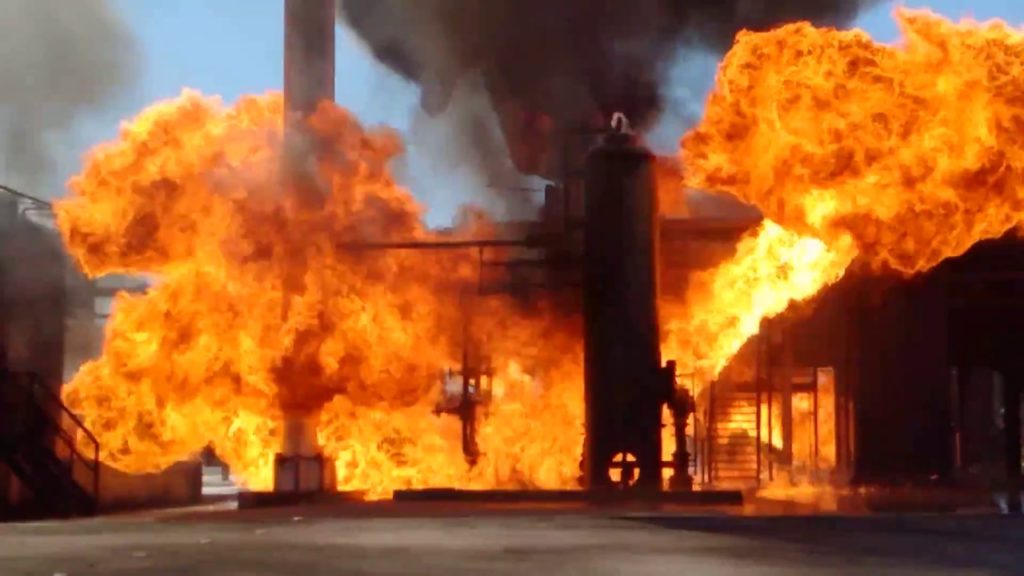Industrial Fire Familiarization: Flammable Liquid Firefighting
One of the lesser touched on subjects of the firefighting world is that of flammable liquids, and techniques for extinguishment. Today we will focus on the control and extinguishment of “Heavy” flammable liquids. When I use the term “Heavy” I mean those of which that are longer chained hydrocarbons. Such as kerosene, diesel, and crude oil. Let’s discuss a few techniques that come along with fighting fires of these types.
WATER
In a liquid firefight our “go-to” weapon will for most cases be the use of foam. However let’s imagine that foam capabilities are not currently available and we are left with handlines and monitors with water only. How should we proceed? With all pressurized or live fueled flammable liquids our first objective is to conduct a gross knockdown of excess flame. Fixed monitors can be used to douse an area to begin flames to more centralized locations so that we can properly identify the source of the flammable liquids if not immediately known. One identified, we must push with handlines towards our source to prevent exposure to any other critical areas. Use of adjustable fog nozzles in this case are the ideal appliance to have ready. This will allow you to not only corral and push flammable liquids, but will allow you to gain more precise control as you move toward or away from a flammable liquid source. Just as with fire extinguishers, we want to start our attack from a distance. Using tighter patterns giving us more reach, start to soak the affected areas back and forth. One critical mistake that I see people doing when learning to fight these types of fires is they don’t use enough of a sweeping side to side motion while approaching these fires. The more we move that nozzle, the more heat we absorb, and the better our situation gets. Take the area of the fire and sweep across from side to side overlapping the non-affected areas by 5-10 feet on each side. This will provide adequate sweep for heat knockdown. As we approach, we are clear to open our patterns somewhat, being careful not to fully fog the flames as this will cause too much of an air current change, drawing flame and fuel towards us. The powercone allows us to continue to push flames away, while utilizing smaller water droplets for heat absorption. By this principle, advancing on a fire with changing nozzle patters will actually give us a better scenario or situation to deal with by most certainly decreasing flame and heat exposure to our firefighters. Once we are able to advance to the source of a flammable liquid spill, we can develop plans, and use our patterns to isolate and stop the flow of fuel.
FOAM
While using water only should only be something that we do in a scenario where we have no other option, firefighting foam can generally give us a better spread and quicker knockdown of the fire (with a few considerations to remember).
- Remember that a foam blanket is only as good as the integrity it keeps. Traipsing through it after laying it down will open and expose areas of hydrocarbon back to potential ignition sources. Make sure a foam blanket is not interrupted which brings me to my next point.
- Re Application of foam will be necessary. If an event will be ongoing for any amount of time, while a foam blanket may seem like a never ending bubble party – think again. Re application will be needed once the degradation of foam begins, be it environmentally or chemically. Always be prepared to apply more foam, keep stocks on site and on scene.
Create Life Saving Experiences with HAZSIM. Click HERE for more information.
hazsim
Ready for your free quote? Submit HERE.



